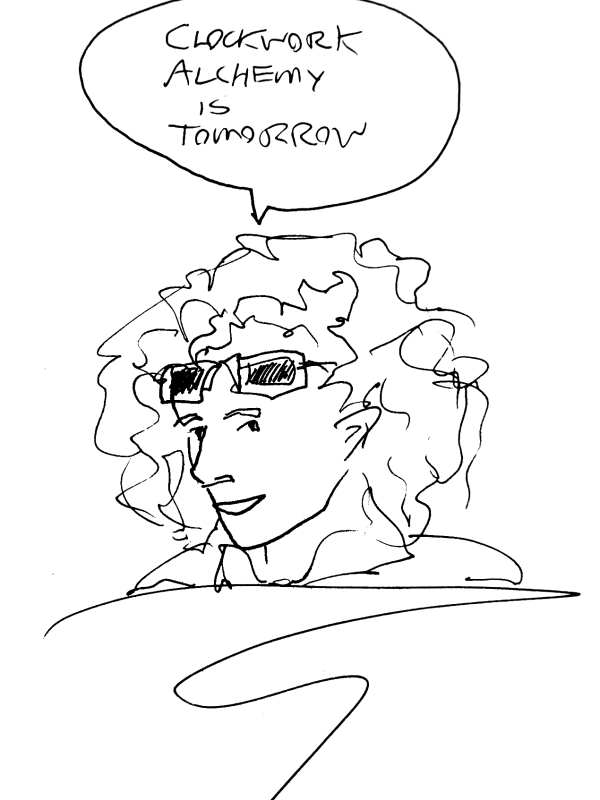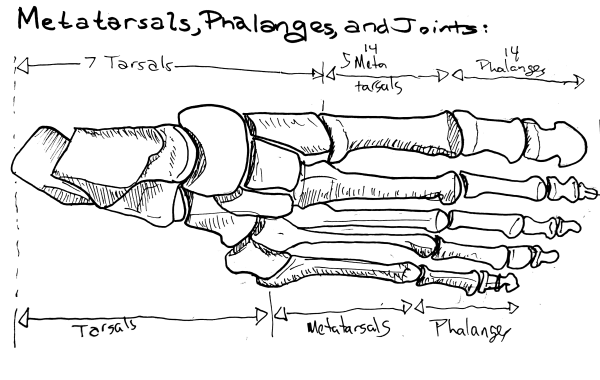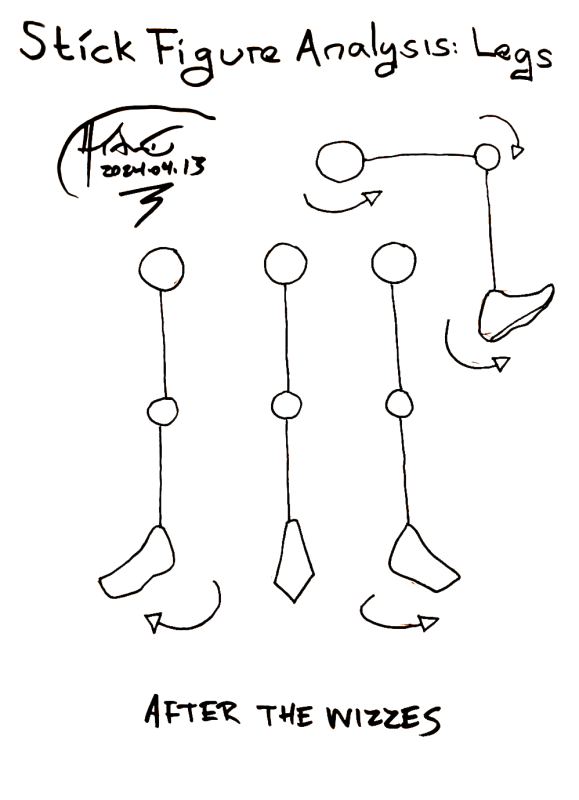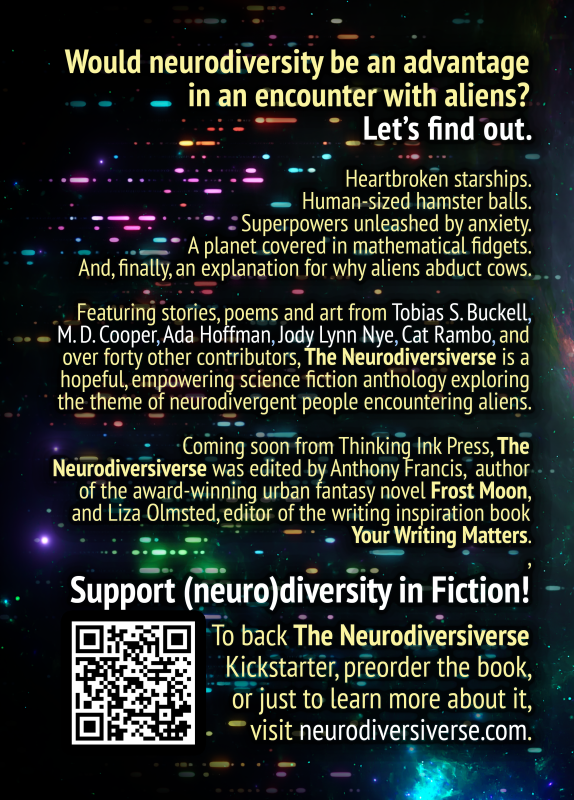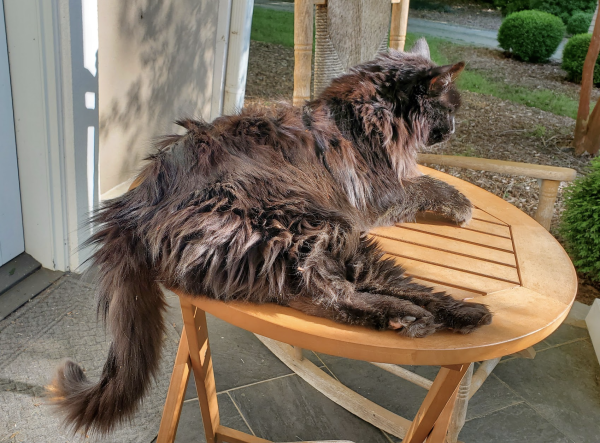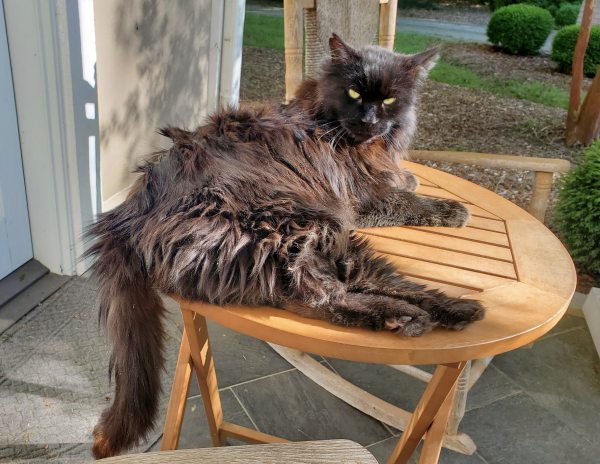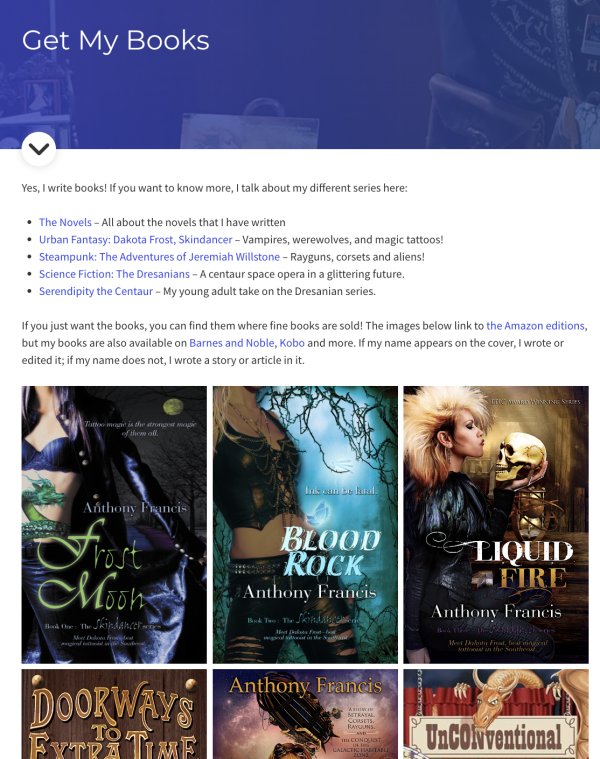
So we had a great first day at Clockwork Alchemy! I got a great Guest of Honor banner for my table, and we had a delightful Tea with the Author Guest of Honor in the con's amazing Tea Room!

My co-editor for The Neurodiversiverse, Liza Olmsted (far left on the picture below), was on an #ownvoices panel, which was very informative! I particularly liked her quote:
The world is so much more beautiful with intersectionality ... everything is so much more nuanced."
Liza Olmsted

"Intersectionality" is a funky word for the simple concept that people aren't a single attribute, like "black" or "women" or "gay" but that each person is a combination of all these things - and discrimination isn't just additive, but can compound in interesting ways. In one famous court case, for example, a court ruled that a group of black women weren't discriminated against because the company had hired a lot of black men (in a factory setting) and a lot of white women (in an office setting) thus improving the percentage of blacks in the factory and women in the office - but the point was, the women were being discriminated against for being black and women at the same time, and the court was essentially arguing you couldn't be one or the other. But, if you acknowledge that people can be more than one thing, you can take their distinctive appearances into account into how you treat them, rather than sweeping it under the rug.

Neurodiversiverse author Clara Ward dropped by and left us a few of her new book, "Be the Sea", which is (as I gathered from discussions) a climatepunk story featuring neurodiverse and nonbinary characters. I worked with Clara before on Doorways to Extra Time and we're excited to have her back for this one!

We hope to see you tomorrow at the con! Next up, Steampunk Vehicles, Bringing Anthologies to Life, and the world premiere reading of "Jeremiah Willstone and the Choir of Demons"!
-the Centaur
